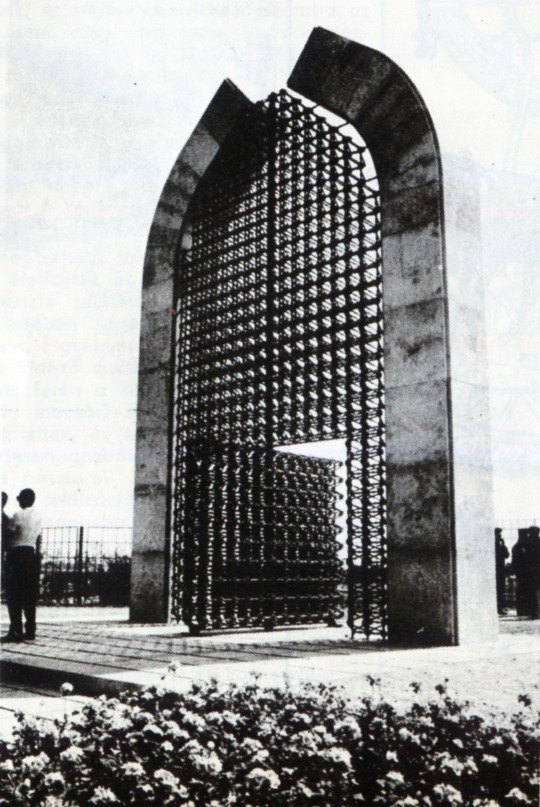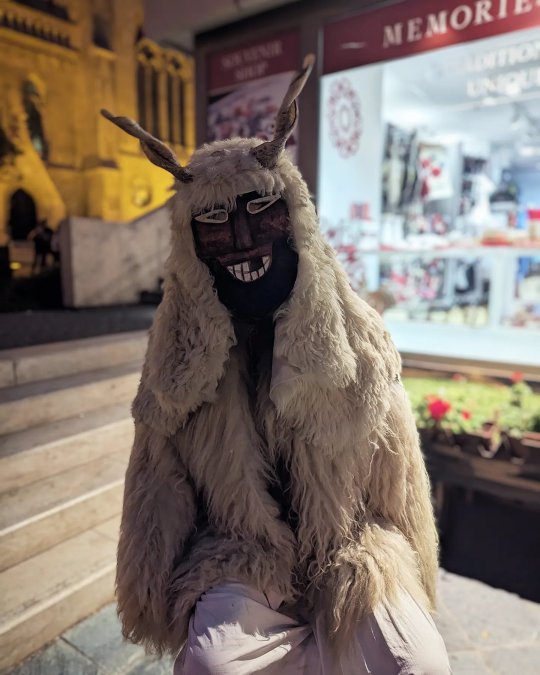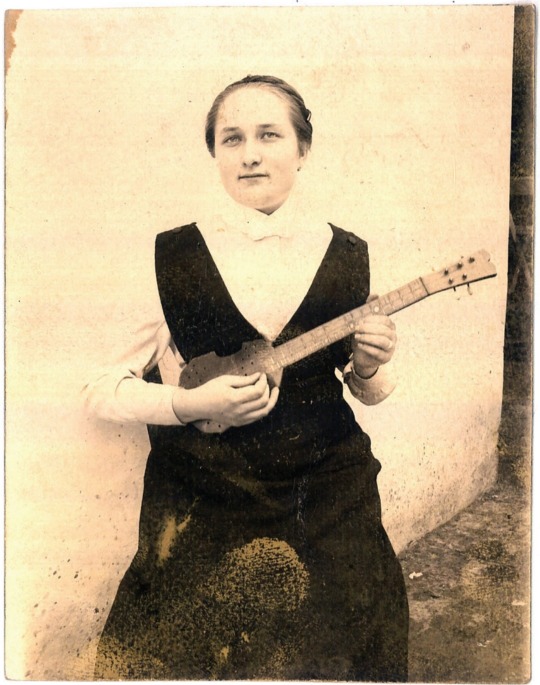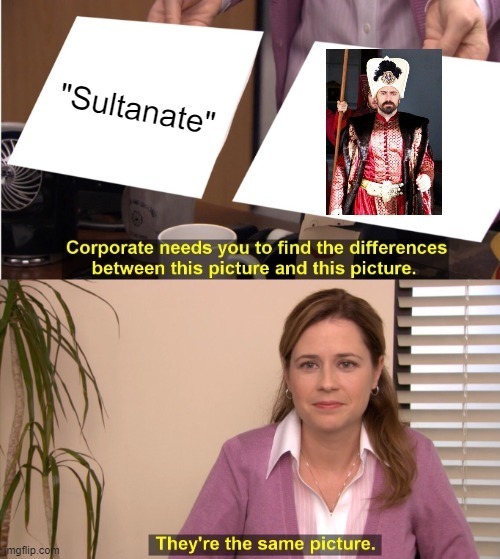#mohacs
Explore tagged Tumblr posts
Text







#Danube River#Serbia#Prahovo#Hungary#Danube-Drava National Park#Black Sea fleet#Germany#sunken warship#shipwreck#Mohacs#World War II#drought#warship#Vistula#Poland
6 notes
·
View notes
Text

Memorial for the Battle of Mohács for the 450th anniversary Hungary 1976
15 notes
·
View notes
Text






Replica Buso masks in Budapest- In the Mohacs region of Hungary the Buso mask is worn as part of a festival to scare off winter.
#occult#gothic#folklore#folk horror#buso#Buso mask#mask#pagan#winter festival#festival#folk art#folk#customs#street photography#devil#demon#imp#monster#myth#legend#folk costume#costume#horn#horns#fur#hungary#budapest
87 notes
·
View notes
Text





Franciscan monastery in Bač, Serbia. Built in 1169 by Crusaders. After the battle of Mohacs, Turks started to rule over Bačka province and monastery was turned into a mosque in 1526. After some time, in 1688, monastery was made Christian again.
24 notes
·
View notes
Text
CD SHORTS: Where did 90% of Romania's medieval history BURN?
The great powers of the 14th and 15th centuries had an efficient intelligence system through spy networks and frequent reports. These secret reports were of great importance to political actors. For this reason, they were carefully archived: in Hungary at Buda in the royal archive, in Venice in the Republic's archive, in Istanbul at the High Porte. These would be the mandatory destinations for any Romanian medievalist. It would be... in an ideal world. Unfortunately, however, most of the documents were destroyed. The Hungarian archive was burned first by the Ottomans after Mohacs and the second time, two centuries later, by the Habsburgs. The Venetian archive burned in the 16th century in two major fires. The Ottoman archives were cleaned at the beginning of the 20th century of the oldest (and for bureaucrats irrelevant) funds, sold as waste paper to the Bulgarians. The fact that we know very little about the Romanian Middle Ages is therefore not a conspiracy or the result of the bad will and incompetence of historians. It simply burned over 90% of the sources.
10 notes
·
View notes
Text
Campaigns of John Hunyadi
Introduction Kingdom of Hungary and Croatia had provided a continuous defense of Western Europe against Ottoman expansion from Battle of Nicopolis in 1396. until Battle of Mohacs in 1526. During this time, external assistance was received only infrequently. With Franco-Burgundian military incompetence causing a disaster at Nicopolis, and Western Europe busy with its own matters, Hungary was…

View On WordPress
#Alba Iulia & Sibiu 1442#battles#Belgrade 1441#Belgrade 1456#campaigns#John Hunyadi#Kosovo 1448#Varna 1444#Vasaq 1442
3 notes
·
View notes
Text
And also yeah yeah Suly and Ibo took Mohac in 2 hours whatever -- if writers were more concerned with showing how Suly lays in a village toilet pit, why should I care? Sigh
0 notes
Text
Il capo del Tar Friuli richiama all’ordine i colleghi: «L’ideologia diventa pregiudizio»
🔗 https://www.laverita.info/il-capo-del-tar-friuli-richiama-allordine-i-colleghi-lideologia-diventa-pregiudizio-2671190685.html
1 note
·
View note
Text
Il T.A.R. Friuli sull'equivalenza funzionale negli appalti di forniture delle apparecchiature elettromedicali.
T.A.R. Friuli Venezia Giulia, Pres. De Mohac, Est. Busico, sent. 30.10.2024, n. 354, xy (Avv. Riccardo Carboni) contro ARCS – Azienda Regionale di Coordinamento per la Salute – Regione Friuli V.G. (Avv. Alessandro Biamonte). Pubblicato il 30/10/2024 N. 00358/2024 REG.PROV.COLL. N. 00273/2024 REG.RIC. REPUBBLICA ITALIANA IN NOME DEL POPOLO ITALIANO Il Tribunale Amministrativo Regionale per…
#appalto fornitura#azienda ospedaliera#azienda sanitaria#centrale d&039;acquisto#cpap#equivalenza funzionale#ventilatore polmonare
0 notes
Text

Route: Pecs - Monument of the Battle of Mohacs - Szeged - Pecs Duration: 9 h Our first short stop we will make at the monument of the Battle of Mohács which was fought on 29 August 1526 near Mohács, and was a crucial event for the history of Europe for the following
#european travel agency#european guided tours#european bus tours#european tours#affordable european tours#travel agency
0 notes
Text
Battle of. Let me.
MARATHON THERMOPYLAE SALAMIS LEUCRA GRANIKOS SIEGE OF TYRE ISSOS GAUGAMELA HYDASPES CANNAE ZAMA SIEGE OF CARTHAGE SIEGE OF CORINTH GERGOVIA ALESIA PHARSALUS PHILIPPI SIEGE OF PERUSIA ACTIUM MILVIAN BRIDGE AD DECIMUM TRICAMARUM ALL OF THE SEVERAL POITIERS BATTLES CEDYNIA GŁOGÓW LEGNICA PŁOWCE GRUNWALD WIŁKOMIERZ COURTRAI AZINCOURT VITKOVA HORA NEMECKY BROD DOMAZLICE LIPANY VARNA CONSTANTINOPLE 1453 MOHACS NOVARA PAVIA ORSZA OBERTYN THE HOLY BATORY TRINITY (POŁOCK + WIELKIE ŁUKI + PSKÓW) KIRCHOLM OLIWA KŁUSZYN BIAŁA GÓRA (I FORGOT WHAT IT IS IN CZECH) CECORA CHOCIM NO. 1 KORSUŃ ŻÓŁTE WODY BATOH BERESTECZKO/BERESTECZEK (I forgot) CHOCIM NO.2 VIENNA RACŁAWICE MACIEJOWICE
LODI CASTIGLIONE ARCOLE MARENGO AUSTERLITZ TRAFALGAR JENA PRUSSISCH-EYLAU WAGRAM BORODINO BEREZYNA LEIPZIG LIGNY-
✨️W A T E R L O O✨️
and afterwards nothing. Not that I don't know anything, but because later military history is boring as hell
Anyway this is all I remember right now. I forgot some Belisarius and I'm sad about it.
APOLOGIES
Any battle at all except Waterloo. Reblog if you can think of one!

9K notes
·
View notes
Text
Top 7 lễ hội ở Hungary, người nước ngoài nhất định phải tham gia
Nếu bạn đang có kế hoạch đến Hungary trong năm 2024 này thì nhất định không thể bỏ qua 7 lễ hội ở Hungary mà Casa Seguro sẽ nhắc đến ngay sau đây.
Lễ hội Balaton


Lễ hội Phục sinh Hollókő
Nhắc tới các lễ hội nổi tiếng ở Hungary chắc chắn không thể bỏ qua lễ hội Phục sinh Holloko. Đây là một trong những lễ hội truyền thống lâu đời nhất tại quốc gia này. Trong lễ hội, bạn sẽ được chiêm ngưỡng các màn biểu diễn dân gian như hát, múa dân gian. Bên cạnh đó còn có các món thủ công do người địa phương tự tay làm ra.

Lễ hội được tổ chức ở Holloko, Hungary. Bạn có thể mang theo trẻ em nếu muốn. Thời gian tổ chức thường là cuối tuần lễ Phục sinh.
Busójárás
Với những ai đang tìm kiếm lễ hội đặc sắc ở Hungary thì Busojaras là gợi ý không tồi. Lễ hội ở Hungary này diễn ra vào tháng 2 hàng năm nhằm chào đón mùa lễ hội. Đây cũng là hoạt động để tiễn mùa đông lạnh giá, đón mùa xuân ấm áp.
Theo truyền thống, những người đàn ông sẽ phải đeo các mặt nạ có hình dáng đáng sợ và đi khắp thị trấn. Họ vừa đi vừa uống Palinka – loại đồ uống yêu thích của người dân địa phương.
Hoạt động này từng chỉ được tổ chức bởi người dân Sokci và ngày nay trở nên rất nổi tiếng.
Trong lễ hội này sẽ chỉ sử dụng Palinka – loại đồ uống có cồn được làm từ trái cây. Địa điểm tổ chức là Mohacs, Baranya, Hungary.
Ozora là lễ hội ở Hungary không thể bỏ qua
Đây là lễ hội âm nhạc, nghệ thuật nổi tiếng mà bất cứ ai đi định cư Hungary đều biết. Nó được tổ chức thường niên và thu hút rất nhiều khách du lịch đến tham gia vì tính độc đáo, hấp dẫn của nó.
Ozora được biết đến là một trong những lễ hội lớn của thế giới với số lượt người tham gia khoảng 60.000 người. Nó thường được so sánh với Tomorrowland – lễ hội âm nhạc được tổ chức hàng năm tại châu Âu.
Thường, lễ hội Ozora sẽ được tổ chức tại Ozora, Hungary và thời điểm diễn ra thường dao động trong tuần đầu tiên của tháng 8. Tham gia lễ hội Ozora là một trải nghiệm không tồi khi định cư Hungary.
Lễ hội văn hóa dân gian quốc tế Summerfest
Khi định cư châu Âu bạn sẽ nhận ra châu lục này có rất nhiều lễ hội và Hungary cũng vậy. Lễ hội văn hóa dân gian quốc tế Summerfest được ra đời vào năm 1987. Đây là lễ hội nhằm tôn vinh các tài năng khác nhau trên khắp thế giới. Điều này cũng đồng nghĩa với việc ai cũng có thể đến tham gia, thể hiện tài năng, kỹ thuật thủ công của họ.
Lễ hội này thường được tổ chức vào nửa cuối năm và diễn ra cùng lúc ở nhiều địa phương. Lễ bế mạc sẽ có cuộc diễu hành với sự tham gia của người ca hát, nhảy múa để chào mừng sự kết thúc thành công của lễ hội.
Thông thường, lễ bế mạc sẽ bao gồm một cuộc diễu hành cùng với những người tham gia ca hát và nhảy múa để chào mừng sự kết thúc của một lễ hội, một thành công khác. Lễ hội này diễn ra ở Ráckeve, Tököl và Százhalombatta ở Hungary khoảng từ 12 – 22/8 hàng năm.
Lễ hội Sziget
Với những ai đang cần tìm hiểu về lễ hội ở Budapest thì không thể không nhắc đến Sziget. Đây là một trong những lễ hội âm nhạc hàng đầu ở Hungary và có nhiều nghệ sĩ nổi tiếng tham gia. Thời gian diễn ra lễ hội thường kéo dài khoảng 1 tuần. Đây cũng là thời điểm Budapest có lượng khách du lịch đổ về cao kỷ lục. Một lượng lớn trong số họ là người hâm mộ của các nghệ sĩ từ khắp nơi trên thế giới.

Nếu bạn đang ở Budapest thời gian này thì hãy tới tham dự Sziget nhé. Bạn sẽ phải choáng ngợp trước không gian, quy mô của lễ hội ở Hungary này.
Lễ hội nghệ thuật dân gian Budapest
Một trong những lễ hội ở Hungary được đánh giá cao là Lễ hội nghệ thuật dân gian Budapest. Lễ hội này được tổ chức vào tháng 8 hàng năm nhằm tôn vinh tài năng dân gian địa phương của người dân Hungary.
Khách tới tham dự lễ hội thường là khách n���i địa và có cả khách nước ngoài. Không chỉ tới thăm quan, khách quốc tế cũng trưng bày và bán các sản phẩm thủ công của họ. Đã tới tham gia lễ hội bạn nhớ thưởng thức các món đặc sản cùng rượu palinka – đồ uống yêu thích của người dân địa phương. Lễ hội nghệ thuật dân gian Budapest rất được yêu thích.
Đây cũng là cơ hội tuyệt vời để người nước ngoài tìm hiểu thêm về văn hóa, nghệ thuật dân gian của người Hungary. Thời gian diễn ra thường kéo dài từ 18 – 21/8.
Trên đây là danh sách 7 lễ hội ở Hungary mà bạn không thể bỏ qua. Đừng quên ghé thăm những lễ hội này và tận hưởng những phút giây tuyệt vời, tìm hiểu văn hóa bản địa thông qua các hoạt động nằm trong khuôn khổ của lễ hội khi đến định cư Hungary hoặc chỉ đơn thuần đến đây du lịch. Để hiểu rõ hơn về quốc gia này bạn có thể đón đọc tin tức trên website của Casa Seguro hoặc gọi tới hotline để được tư vấn, hỗ trợ.
Xem thêm: https://casaseguro.asia/le-hoi-o-hungary/
0 notes
Text

Olga Plavšić (Ristić) with tambura, Mohacs, Hungary, 1917. Jovana Jovanović, SANU
"I listened to songs that have a constant source of virtue for me personally from my grandmother. She sang us songs from her childhood, from Mohács in Hungary, where it was definitely necessary to nurture, preserve Serbian traditional music."
#mohacs#serbia#slavic#eastern europe#hungary#baranja#tambura#mohács#jovana jovanović#serbs in hungary
71 notes
·
View notes
Text
I truly do not think you read the original post with comprehension and understood it and that's your chief problem. Nobody talks here about earlier Mahi before rejection! Or that rejection was not the main reason for her gaining awareness.
This is precisely the point of the post that the rejection was freeing in this way (and the irony of it all!) because otherwise she would have never embarked on this road. When Hürrem gets freedom from SS and refuses to give it to Mahi, first she gave up on Suly and then when she came back to the palace, she decided to be strong on her own (as mother of adult prince) but in the wrong way defined by anger as her failed harem rule and misguided focus on revenge showed (precise attempt to be harem winner and use it to her advantage). She learned from her mistakes to focus on becoming a great support for her son in Manisa and fulfil her role as mother of prince and Valide of the household there well. Yet still as mother of prince she had to abide by certain stuff. Then S4 comes in and we talk about the moment where she is after Mustafa is dead.
We are talking about character evolution up until S4 and their final moments. Character journey (which is also not linear). Of course there are plenty of examples of Mahidevran endorsing the system and its rules, especially in S1 when she is the most important concubine LMAO. It's not surprising at all. It's clear as day. But that's not the topic of my post discussing whole character arcs and especially the destinations of their journey.
I purposefully linked to Plami's post to discuss this issue because she explained it excellently and beautifully:
Mahidevran, conversely, also found out his true nature and detached herself from it, daring to openly call out a root of the attachment (E139: “He decides the fates of all of us.”) and put the free choice of everyone into light and question. (E139: “God, apart from reason, gave people free will.”) It’s rare for someone to gain such awareness of the system and that’s a valuable quality to have, but in a future where Mahidevran and Ayşe aren’t as grossly mistreated, would all this be possible to happen? No, I don’t think so. And even the ones that aren’t favourites who are more likely to find this out, there are still people out there that probably would stay trapped in the attachment forever. And favourites would be the least likely to figure stuff out, judging by the series’ themes. (Hürrem, E134: “I am the soul of all the women in the world and my existence is hidden in the love of the conqueror of my heart.” - this assertion is honestly self-explanatory.)
Read the whole thing. It's worth it!
"I don't think the show wants you to sympathise with him- especially in s4 anyway.. like don't worry!" - I totally agree with this part, he clearly emerges as the show's main villain and it's beautiful. The gradual revelation and awareness of this is one of the show's most important themes without the doubt. And his journey to that starts with Mohacs and his greatest victory (but examples of his greatest flaw and seeds are of course even in S1).. precisely because that's an important theme as well. That biggest victory can be the beginning of your downfall (also moral one as in case of SS), as also shown with Hurrem after getting rid of Mustafa and even admitting to it being her darkest days and her winter starting from there. Even Sumbul warned her before that "the biggest victory" concept can be misleading, but she hushed him since she always had won before. Constant winning can make you blind to certain things and have a negative impact, that's a recurring theme in the show as well. And also commentary on the Darwinist system.
"Saying someone else would be better Sultan is not anti-systemic" - it's really sad that's all you took from my post (and something I never said, bah I never even used the word "anti-systemic") and conveniently omitted the most important stuff Mahi said about Suleiman being the master puppeteer directing their lives etc. They expose system as whole.
/And deffo me saying it would mean nothing, but like.. what's the point of this again aasmshs)/.
As for Suleiman apologia, forgive me for not addressing it because I spoke on the topic long enough. Of course he is human, but precisely due to system and him being it, the "power getting to his head" has disastrous consequences for everyone because of how this fucked up human with issues can decide on everyone's fates. Just have a meme from me to wrap it up:

Just thinking how Hürrem was given freedom by Suleiman, which literally did not mean a change in her life other than prestige brought by marriage - she continued to be mentally dependent on him and got absorbed into the system even more… Suleiman’s rejection of Mahidevran, which also contributed to him refusing her freedom (yes she never stood a chance because he never loved her and his favoritism was what decided fates in that system in the end), actually freed her in the long run mentally and emotionally. It was the moment she decided to give up on him and slowly walked towards her full mental independence. And while she still had to obey certain rules imposed by the system due to her having her prince, upon his death, she stopped giving shit and finally voiced all the anger about Suleiman and the system. She lost all the “golden cage”, but she gained freedom from constraints of mind and emotion that the system put on individuals. She was free to get most reflection about the system & form critique of it without being an active part of it any longer. A sad freedom but the truest one any of these women got.
#mahidevran sultan#hurrem sultan#suleiman the magnficent#thus said there are also characters who better adapt to the system due to their personality#and are more fitted for it#so we do see Hurrem bossing around Gulnihal from the start and telling all concubines they would come to serve her when she is not even SS'#favourite#and yes seeing the allure in it enabling you to rule the world in the end#hurrem herself stresses mutiple times her PERSONALITY traits that make her “not like other girls”#hence her stressing to again gulnihal she is not like her and Mahi and others but of 'sterner stuff'#and while Mahi is her enemy Gulnihal IS her loyal friend#and yes this 'sterner stuff' note the citation marks is advantage in power games#but it also makes one more prone to get sucked in deeply to the system#there is a price for everything#losing is self-explanatory not something we strive for but it helps to gain awareness#just.. life
241 notes
·
View notes






